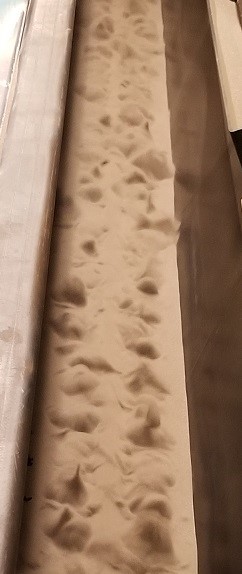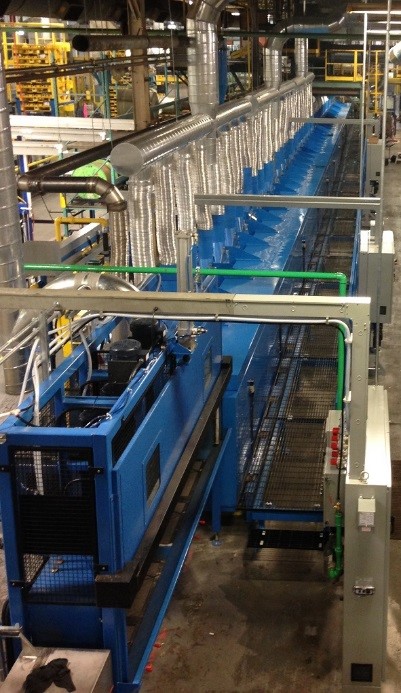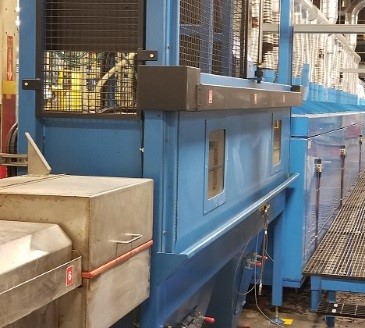Born out of a RAPRA research project, Ballotini vulcanization channels contain a bed of glass beads fluidized by hot air. The combination produces heat transfer rates 5 to 8 times faster than conventional high velocity hot air ovens. This is the curing medium of choice for high speed production of supported EPDM extrusion profiles for the automotive industry. Depending on the profile, line speeds of up to 36m/min (120 ft/min) can be achieved.
KRR Inc. has evolved the design of these ovens to:
- Minimize maintenance costs
- Improve energy efficiency
- Reduce line start-up times by employing advanced control schemes.
KRR Inc. also provides the auxiliary equipment to ensure complete removal and recycling of the glass beads from the product to the oven.


General system description:
- Natural Gas fired indirect heating of the fluidized air. This ensure combustion air does not come in contact with the beads or the product.
- Bed designed using air slits strategically spaced to guide the extrusion to the center of the channel.
- Manufactured in 3m sections combined in 3 to 4 section zones. Typically, there are 3 zones for each complete oven.
- Cascade PID control of the bed temperature with set-point ramping to avoid thermal shock and oven warping. This is the chief cause of repairs to previous manufacturers ovens.
- Exhaust control that compensates with specific speed changes for locations the oven lids being opened.
- The upper portion of the bed widens to a V shape to avoid entraining beads in the exhaust air. Bead separators for each exhaust point keeping the medium out of the ducts.
Auxiliary equipment
- Bead Brush-Off station located at the end of the oven removes beads using rotating brushes and compressed air. Beads are filtered and returned to the oven using compressed air conveying tubes and a cyclone.
Water cooling tank collects trace amounts of beads in weirs with extra filtration of water to ensure long life of the recirculation pumps.
